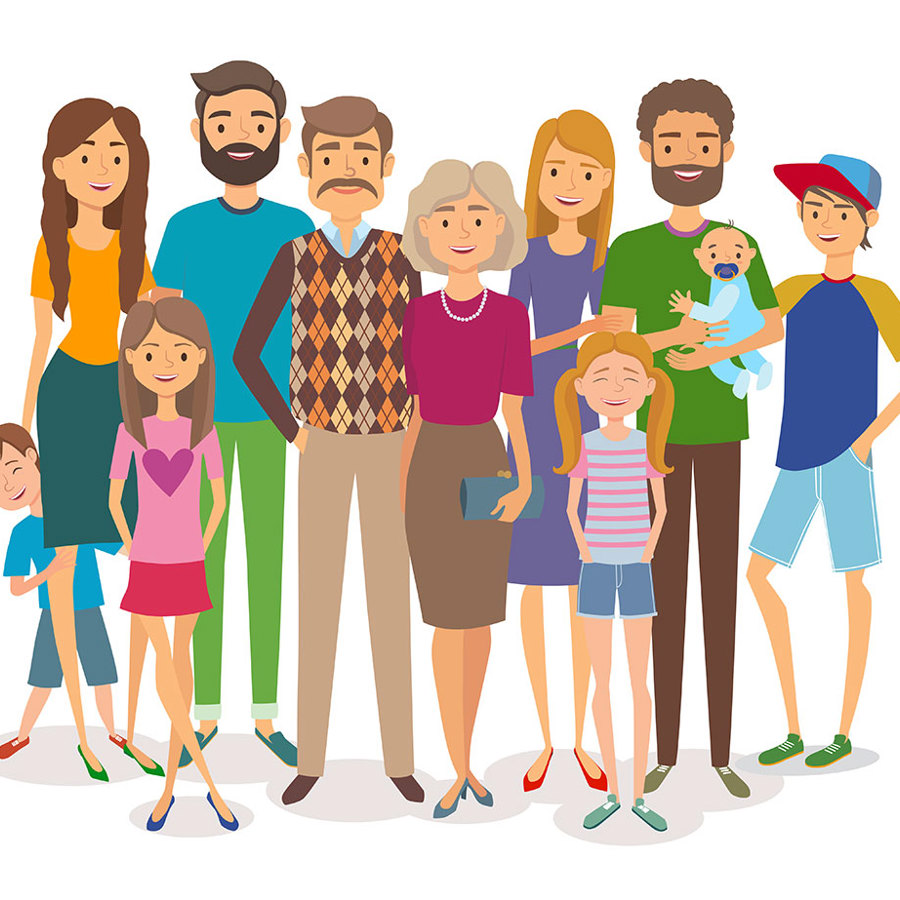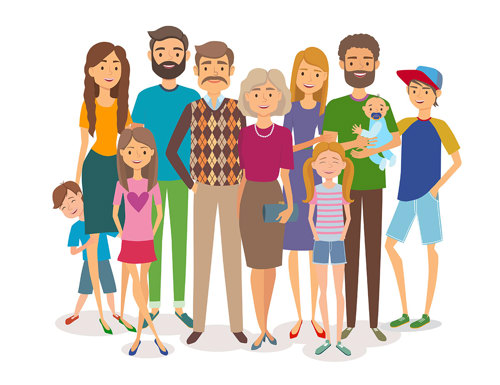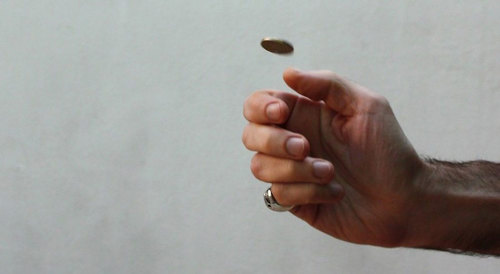
Should I be concerned that my boyfriend and I share an ancestor from 23 generations ago?
December 17, 2007

- Related Topics:
- Intermarriage,
- Genetic genealogy,
- Complicated family trees,
- Autosomal recessive inheritance
A curious adult from Maryland asks:
It's amazing who we're related to if we go back far enough. Recently, there was a news article saying that Barack Obama and Dick Cheney are ninth cousins, sharing an ancestor eight generations ago. And President Obama and President Bush are actually 11th cousins!
Since you and your boyfriend share an ancestor from 23 generations ago, that would make you 24th cousins. If one generation is about 25 years, then you shared a relative about 500 years ago. That was around the time Columbus came to America.
If we go back 23 generations, you are directly related to about 8 million* of the people back then. If we fast forward 23 generations, a whole lot of those 8 million people went on to have kids. And you are related to all of them. If we rule out your boyfriend, we sure rule out a lot of other people too!
(Of course if we go back farther, we are related to everyone. You have to go back about 80 or so generations to get back to this person.)
So back to your question – how likely is it that you and your boyfriend would pass a genetic disease on to your child? Well, it's hard to say because there are a lot of factors that play a part, like if a disease runs in both of your families. But we can say that it is very unlikely that anything will happen because you and your boyfriend are 24th cousins.
Scientists have estimated that children of first cousins have about a 2-3% higher risk of inheriting a genetic disease compared to children of unrelated individuals. Your risk will be much less than this.


Let's look at how genetic diseases are passed on to get a feel for where a number like 2-3% comes from. And why it is so unlikely that your shared distant relative gave each of you the same bad genes.
Remember, we each have two copies of almost all of our genes – one from mom and one from dad. These genes can come in different versions. And some versions can lead to disease.
The average person carries around 5 gene versions that can cause disease. But we aren't all riddled with genetic disease.
This is because most genetic diseases need for both of your copies of a gene to be a disease version. In other words, most genetic diseases are recessive.
So if only mom or dad gives us a bad copy, then our good copy can usually do an okay job and we're disease-free. To end up with a recessive genetic disease, we need to get a “disease” copy from both mom and dad.
That's why it's really bad if siblings have children. Say dad has a bad copy of a gene. Each child has a 50-50 shot of getting the disease version of the gene. This means that two of his kids will get the bad gene 25% of the time (you multiply percentages together to figure out these sorts of risks).
The chances of passing a disease gene to the next generation is the same as getting heads on a coin toss.


It might help to think about these things like flipping a coin. Heads you get a disease gene, tails you don’t. So for both kids to end up with a copy of the disease gene from their dad, dad needs to get heads on two coin flips.
If a son and daughter who both got dad’s bad gene have kids, then the risk that their kids will have the disease is 25%. Again, they would each need to flip a coin and get heads. So in this case, we need to flip a coin 4 times and get heads every time.
The odds are much less for first cousins than they are for siblings. Say grandpa has a bad copy of a gene. The chance of two of his kids receiving the bad copy is still 25%. Again, we flip our coin and get heads twice.
Now grandpa’s kids have children with unrelated people. The chance that each of grandpa’s kids will pass down the disease gene to their kids is 50%. The odds of both of grandpa’s kids passing it to their children is 25% (50% times 50%). Again, we flip the coin twice and get heads. So now we are up to 4 coin flips that all have to be heads.
Now the cousins marry and decide to have kids. If each cousin carries grandpa’s bad gene, the odds of both of them passing it on to their child (who would end up with the disease) is 25%. This requires two more coin flips that end up with heads. So now we have flipped the coin six times and every time we get heads. The overall chance of this happening is small, around 2%.
Now what happens with 23 generations? Basically you need to keep flipping coins and end up with heads 48 times in a row. This is possible but extremely unlikely. In fact, the odds of flipping a coin and getting heads 48 times in a row is .5^48 or 3.5 x 10-15 (less than one in a hundred trillion).
These are the same odds that you and your boyfriend have a disease allele from your shared ancestor and both pass it on to your child. This doesn't mean that your child only has a 1 in a hundred trillion chance of getting a genetic disease. It just means that there's a 1 in a hundred trillion chance of getting a disease due to your shared ancestor. There is still a chance for genetic problems even for children of people who aren't all that closely related.
* If we say that for each individual, there are 2 parents, 4 grandparents, 8 great-grandparents, 16 great-great-grandparents (2^number of generations) and so on, then that's 2^23 or 8.4 million direct ancestors after 23.

 Skip Navigation
Skip Navigation
